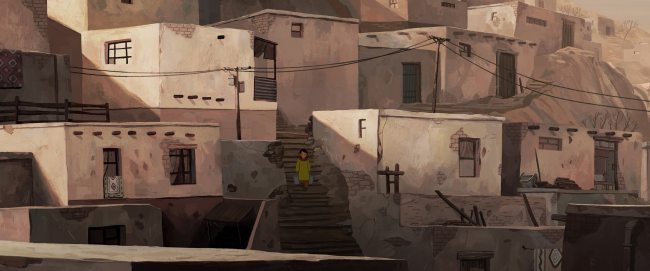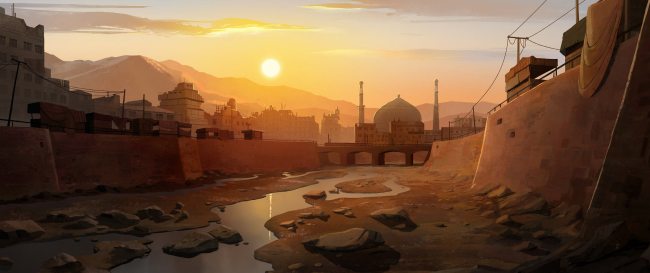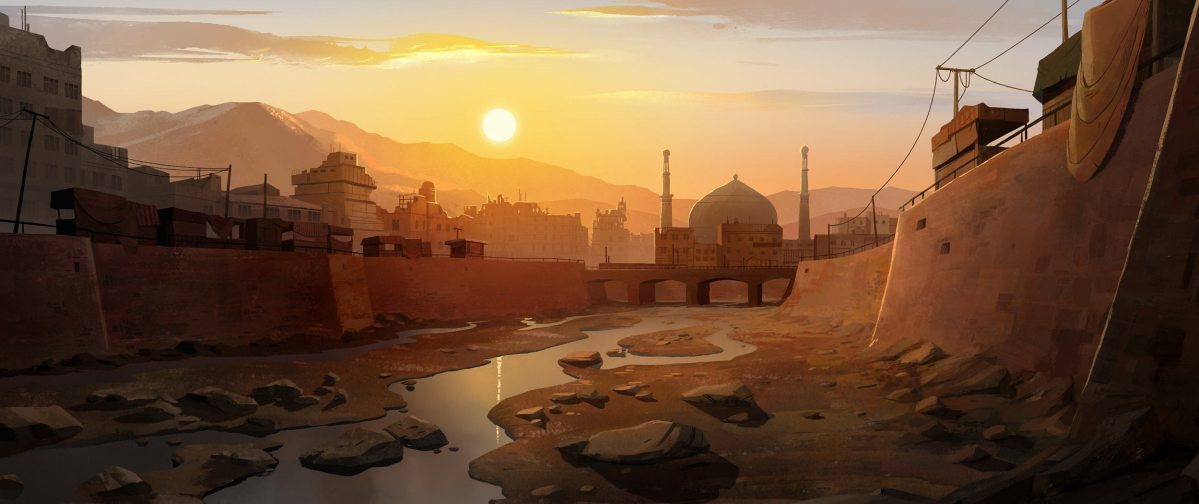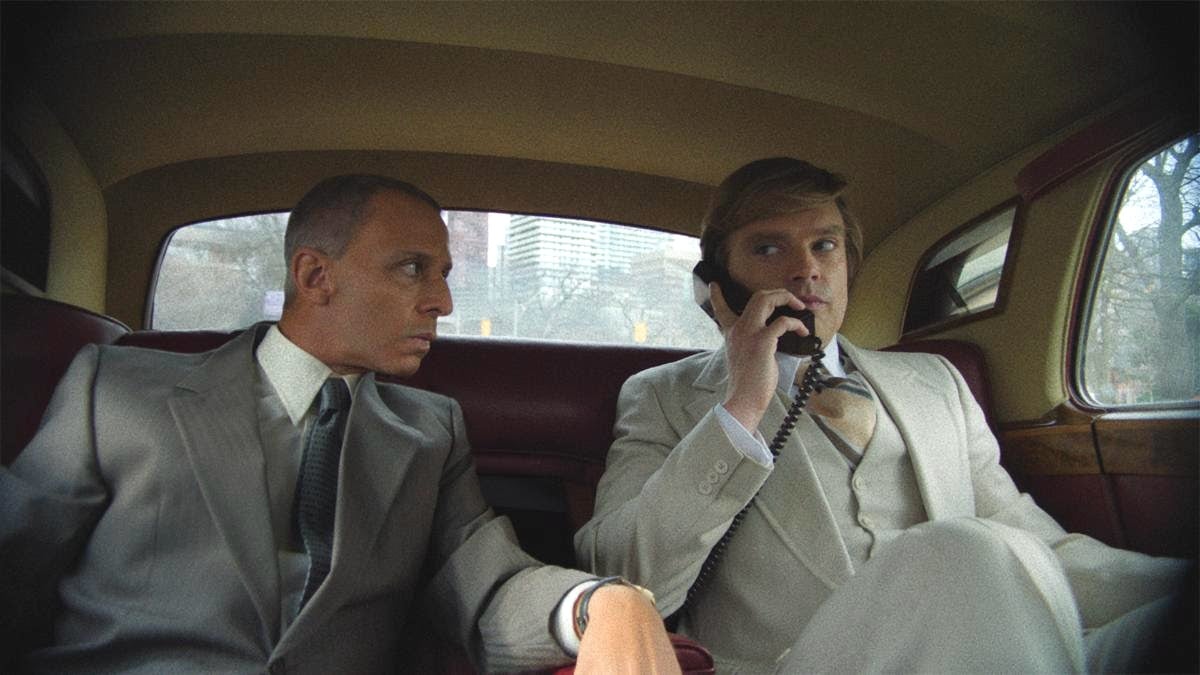Nora Twomey faced a number of challenges in animating Deborah Ellis’ The Breadwinner, the story of a 11-year-old Afghan girl trying to help her family survive after her dad is unjustly imprisoned by the Taliban. In my conversation with Twomey, The Breadwinner director discusses how the film navigates scenes of violence—taking children seriously as audience members without being gratuitous—how animation is a powerful medium for stories like this, and the incredible care the team at Cartoon Saloon took in ensuring both accuracy and sensitivity.
The Breadwinner is a story about storytelling, and as we dive into the visually stunning tales our protagonist Parvana paints in moments of struggle, pain, and perseverance, it emphasizes for the audiences the kind of impact that films like Twomey’s can make in the world.
The Mary Sue (Charline): We watch a lot of really brutal scenes within the movie that we might not immediately associate with a children’s film or an animated film. Why is it important not to shy away from these realities?
Nora Twomey: The film is aimed at the same audience as Deborah Ellis’s book which is used as an educational tool for kids aged 9 upwards and adults. As a mother, I took great care to never be gratuitous with violence but instead to allude to it off-screen, and to show that violence has consequences. To show the vulnerability of life and the extraordinary resilience of a young girl like Parvana was at the center of this story.
It saddens me that animation is thought of as only a medium for young children when there are films like Persepolis, Waltz with Bashir, or this years Girl Without Hands out there. It is a medium. not a genre. No one would state that live-action films should all be romantic comedies so why expect animated films to be exclusively for very young children?
Having said that, I do hope that older children get to see The Breadwinner and that the film can be part of discussions between young people and parents about issues that will have an impact on their lives as they grow older. Our job as parents, is not to protect our children from the more complex or difficult issues of the world, but to give them the tools to approach them with compassion, intelligence and bravery.

TMS: Tell me more about the look of the cut-out animation scenes and how you wanted to utilize those shifts in story and medium.
Twomey: We wanted to honor the rich history and culture of Afghanistan with the cut-out style of Parvana’s imaginative storytelling. To show the color pallets made from ancient Afghan artifacts and design motifs from Afghan miniatures was key to the look of these sequences in the film. Reza Riahi, co-art director on the film and the team had such fun figuring out the look of Parvana’s story world, the actors also really enjoyed the lighter, more comedic approach to this part of the film.
We really wanted to to feel like a visual feast, representing the history of Parvana’s people, her strength of character and her potential. Jeremy Purcell, who directed these sequences worked with Guru Studio to figure out a way to create the cut-out look digitally, as we couldn’t afford to do it under a camera, as would have been done in the past. The whole team put so much effort into problem solving with this film, across our co-producing partners in Ireland, Luxembourg and Canada.
TMS: Was there a lot of care to make sure the scenes of Afghanistan were accurate and sensitive?
Twomey: Yes, from the moment we began working on the screenplay, we made sure everything we did was being inputted to by Afghan consultants. About half of our cast are Afghan too so I had them to advise the sensibility of the film. As we worked through the years of production, we made sure the film was culturally specific but also universal.
At the end of the day, Parvana loves her Dad, fights with her older sister and makes mischief with her friend Shauzia like children anywhere in the world. Anita Doron, the screenwriter and I didn’t want to make a political film, we felt the strength of the story was the universality of a character like Parvana and focused on that, as the heart of the film.

TMS: I really loved the variety of female characters within the story, and how each one had their own kind of strength and resistance. What do you think is the great message about this film and its themes of perseverance?
Twomey: I think it’s interesting that people come up to me after screenings pointing out different elements in the film that they felt particularly effected by. With a film like this, crafted over many years and with the input of more than 300 animators, artists, actors and crew, I don’t think would be right for me to narrow it down to a single element. Each participant put part of themselves up on the screen and I believe you can feel that in the resulting film.
Mychael and Jeff Danna, the film’s composers involved The Nahid Women Choir of the Afghanistan National Institute of Music, a group or young girls who’s voices signify hope, in the score of the film. For me, hearing the voice’s of these young girls, growing up in Kabul right now, and having that woven into the fabric of The Breadwinner film sums up everything that the film celebrates. If you wait to the end of the credits, they also sing a beautiful folk-song. One voice continues a second verse of the song accidentally, only to be hushed by the others before they begin to giggle. That giggle, for me personally, expresses everything the film is about, it is beyond words.
TMS: In addition to being a film about a young girl telling stories, The Breadwinner also is one of the few animated films (if not the only, as far as I know) solely directed by a woman coming out in 2017. I was wondering if you could talk about why it’s so important that girls and women are given the space to tell their stories.
Twomey: Well, of course you have had the major watershed moment of Patty Jenkin’s Wonder Woman showing the world that block-busters can not only be directed by women, but have a female protagonist lead the box-office. We are 50% of the world’s population, to have our stories and the way we see the world continually filtered through the male perspective won’t wash anymore. Considering everything that’s happened this year, especially in the last few months in the entertainment industry, positive change for the culture of the workplace is inevitable.
I wish I lived in a world where I could talk about the film I made rather than the fact that I am a female, but I don’t live in that world and I have a responsibility to the young girls and boys considering film-making as a career to speak up about gender bias. The Breadwinner has a nuanced and empathetic look at all the film’s characters, indeed the character of Parvana cannot be merely defined by her gender, and I’m very proud that this film exists and am grateful to all those who championed it along the way.
The Breadwinner arrives in select theaters November 17th.
Want more stories like this? Become a subscriber and support the site!
—The Mary Sue has a strict comment policy that forbids, but is not limited to, personal insults toward anyone, hate speech, and trolling.—









Published: Nov 15, 2017 09:22 am